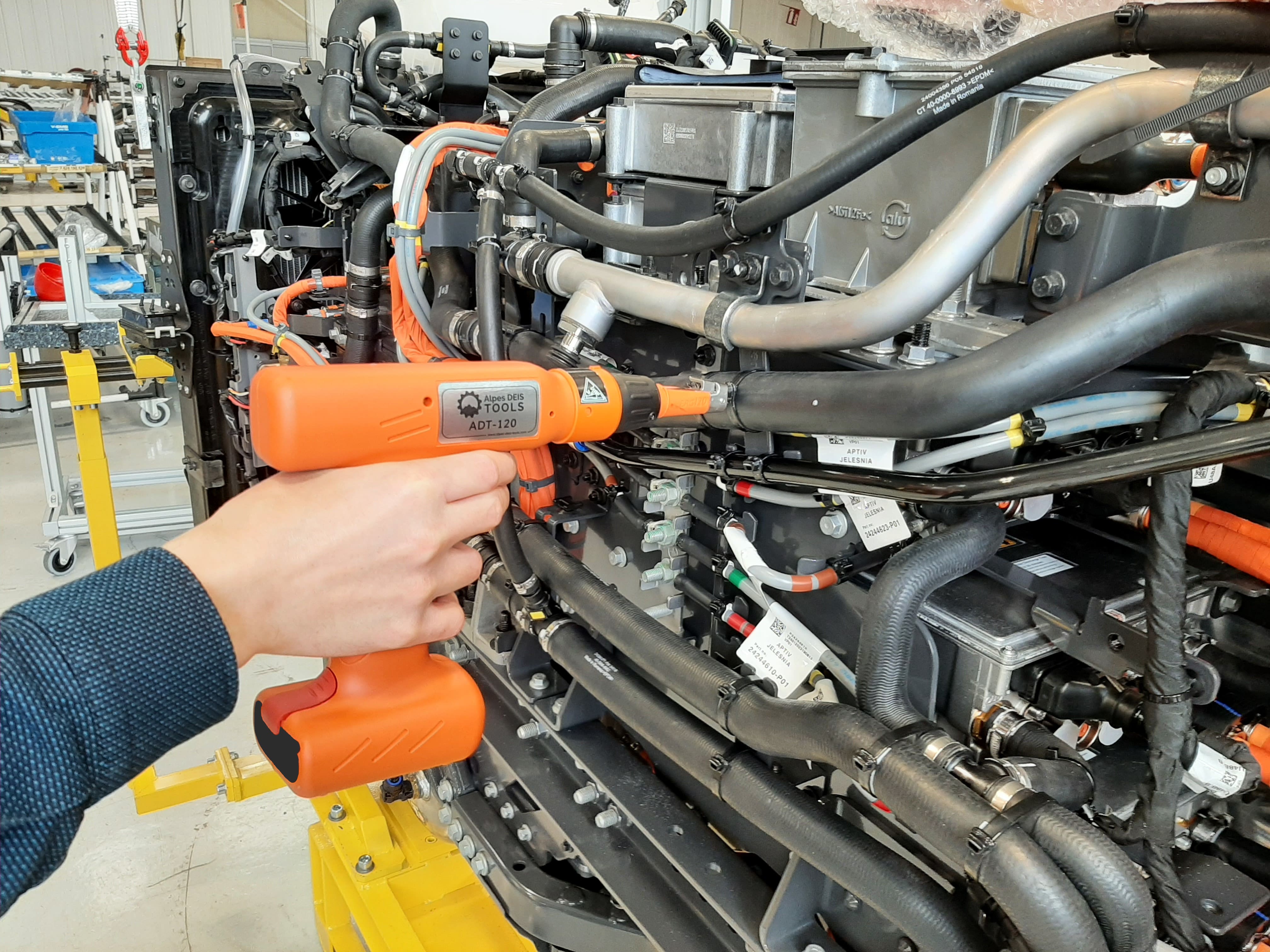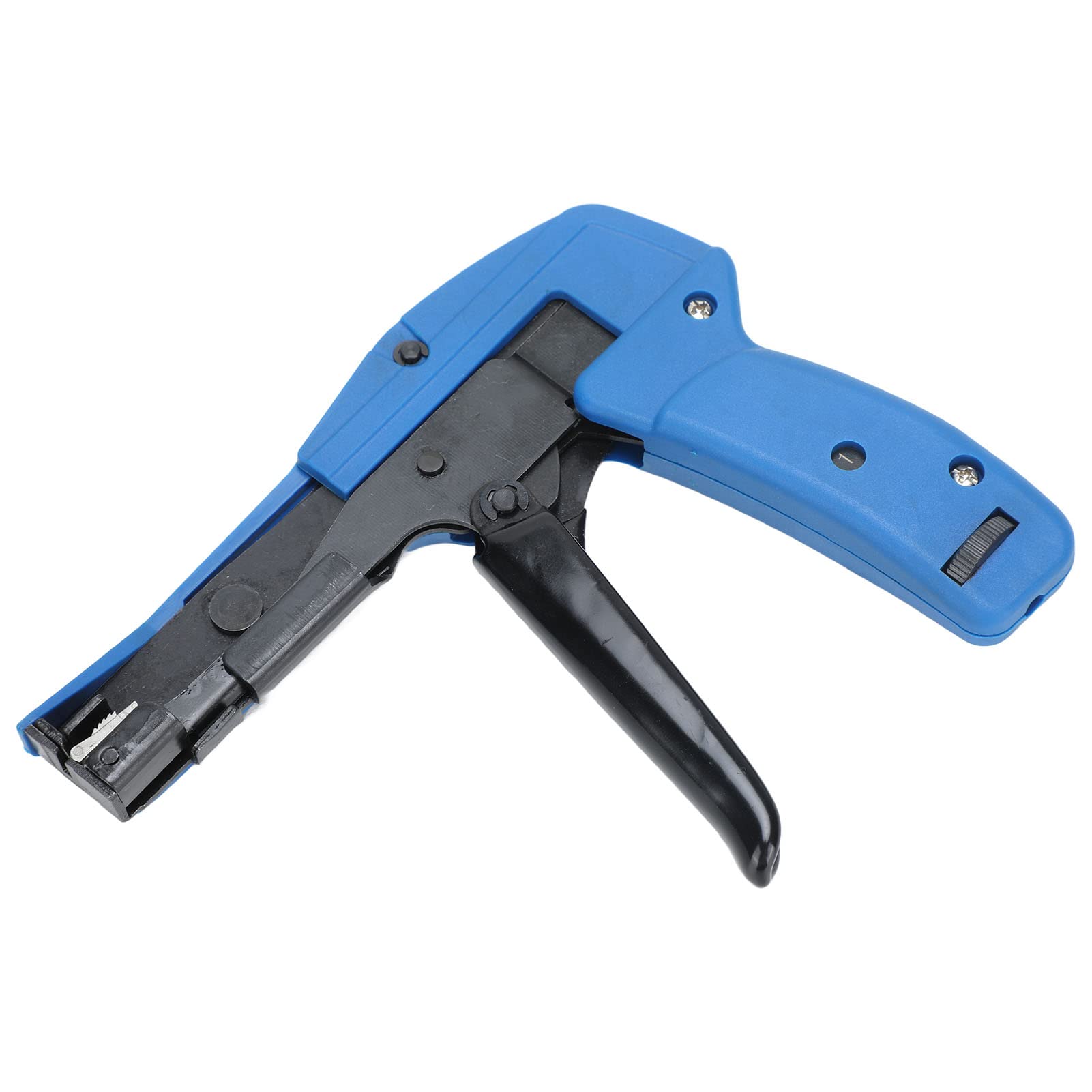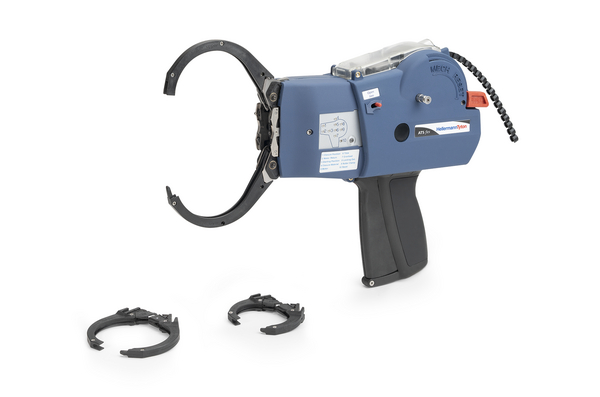Our solution against MSD in industry
What are MSD?
Musculoskeletal disorders (MSDs) encompass a series of problems affecting an operator's movements and posture, as well as the grip effort associated with repeated operations. These occupational diseases often originate from the repetition of movements, incorrect posture or ergonomically unfavorable working conditions. MSDs affect muscles, tendons, nerves and joints.
The harmful impact of MSDs on employees generally manifests itself in the form of chronic pain, or even accidents leading to repeated work stoppages. They have social and financial consequences for employees, such as additional medical expenses, and have a direct impact on companies' Quality of Life at work and productivity.
Cable ties tightening operation: why talk about MSD?

Tightening cable ties is technically based on the use of a manual tool, enabling the operator to apply repeated strong pressure to properly tighten a tie around a set of cables in order to hold them tightly together.
We have seen the example of the tie wraps clamping operation on assembly and production lines in previous articles. Let's take the example of heavy vehicle production.
Numerous cable ties are fitted to different components of the vehicle, such as the chassis or the front of the cab. They keep cables, hoses and electrical wires in place, ensuring safe and reliable operation of the vehicle.
Around 1,000 zip ties can be fitted per truck, with some plants producing 50 trucks per day and others up to 400, such as Daimler's Wörth plant. On an assembly line, the cable ties tightening operation is therefore extremely repetitive for the operators at these stations.
Gestures and Gripping: The installation of the zip tie begins with its hand-tightening onto the chassis or other vehicle component, followed by the use of a manual tool to complete the tightening and cutting of the tie. Hand-operated pliers require the user to exert considerable force, which causes repeated tension in the wrist.
What solutions exist?
Cable ties can be tightened using manual, pneumatic or automatic pliers, depending on the degree of automation of the production line and the number of zip ties applied per hour. This operation, which is often repeated hundreds of times, requires a great deal of force to tighten the ties, and inconveniences the operator when gripping them. It can be the cause of carpal tunnel syndrome associated with the repeated use of manual clamps.
The pain comes from the repetition/force involved, so a tool that performs this operation instead of the operator is needed.
We can see a summary of what they provide.
Manual tools

Source: amazon.ca
About the functionality
✔ Fast
✔ Inexpensive: ~100-400 €
✔ Cut of cable tie (waste) retention
✘ Quality of installation varies according to the
tool and the operator
✘ Discarded and replaced
About MSDs - carpal tunnel syndrome
✔ Only certain pliers can be used ambidextrously
✘ MSD carpal tunnel syndrome possible: due to pumping action and extra effort to cut
Pneumatic tools

Source: eshop.wuerth-industrie.com
About the functionality
✔ Fast
✘ Expensive: ~1 500-3 000 €
✘ Difficult and costly to maintain
✘ High consumption
✘ Inconvenience due to compressed air hose
✘ Quality of installation varies according to
air network
About MSDs - carpal tunnel syndrome
✔ Only certain pliers can be used ambidextrously
✔ Rare MSDs (carpal tunnel syndrome)
✘ Possible MSD in the elbow due to the stroke of the gun
Automatic tools

Source: hellermanntyton.com
About the functionality
✔ Fast
✔ Better for the environment
✔ Waste retention
✘ Expensive: ~10 000 €
✘ Heavier
✘ Space constraints due to clamping hoop and tool size
✘ Residue on cable ties as they are assembled together
About MSDs - carpal tunnel syndrome
✔ Ambidextrous
✔ No MSDs
ADT Tools, the battery-powered tools

Genesis of the ADT tool: ADT tools were designed to solve the problem of effortless clamping of cable ties on a production line requiring repeated (or high-speed) clamping and complex access. ADT Tools clamps enable effortless, systematic tightening (the same force is exerted each time the trigger is pressed), thereby avoiding MDS problems on even the most intensive production lines.
The electro-portable tool is based on a clamping head mechanism (adapted to the profile of the zip tie) and a corresponding motorisation scheme. The electronics, which control the motorisation, determine the force required for clamping in place of the operator, and apply it without generating any tension.
What other advantages does it offer?
✔ Ergonomics: this is a lightweight (<1kg, <2.2lbs), ambidextrous tool with a narrow, rotating head for improved accessibility and productivity.
✔ Autonomy: the battery can be used for a full 8-hour shift.
✔ Adjustable, repeatable force: tightening is better controlled, and the quality of the cable ties fitting is improved. With manual clamps, this could vary according to the operator's strength and level of fatigue. Installation with pneumatic guns, on the other hand, can vary according to the air network.
✔ Durability: the majority of zip ties tighteners are consumables, unlike ADT, which offers different levels of maintenance to ensure longevity.
In conclusion ?

The MSD prevention approach, which enables companies to reduce the risks of these disorders occurring and their costs, is an increasingly systematic approach to supporting Quality of Life at Work, and mobilising employees around improving the ergonomics of workstations or training employees in good practice.
ADT Tools has been designed to meet this need and to fill the shortcomings of the various pliers already on the market.


 Healthier and happier workforce
Healthier and happier workforce
 Improved Quality and Process
Improved Quality and Process
